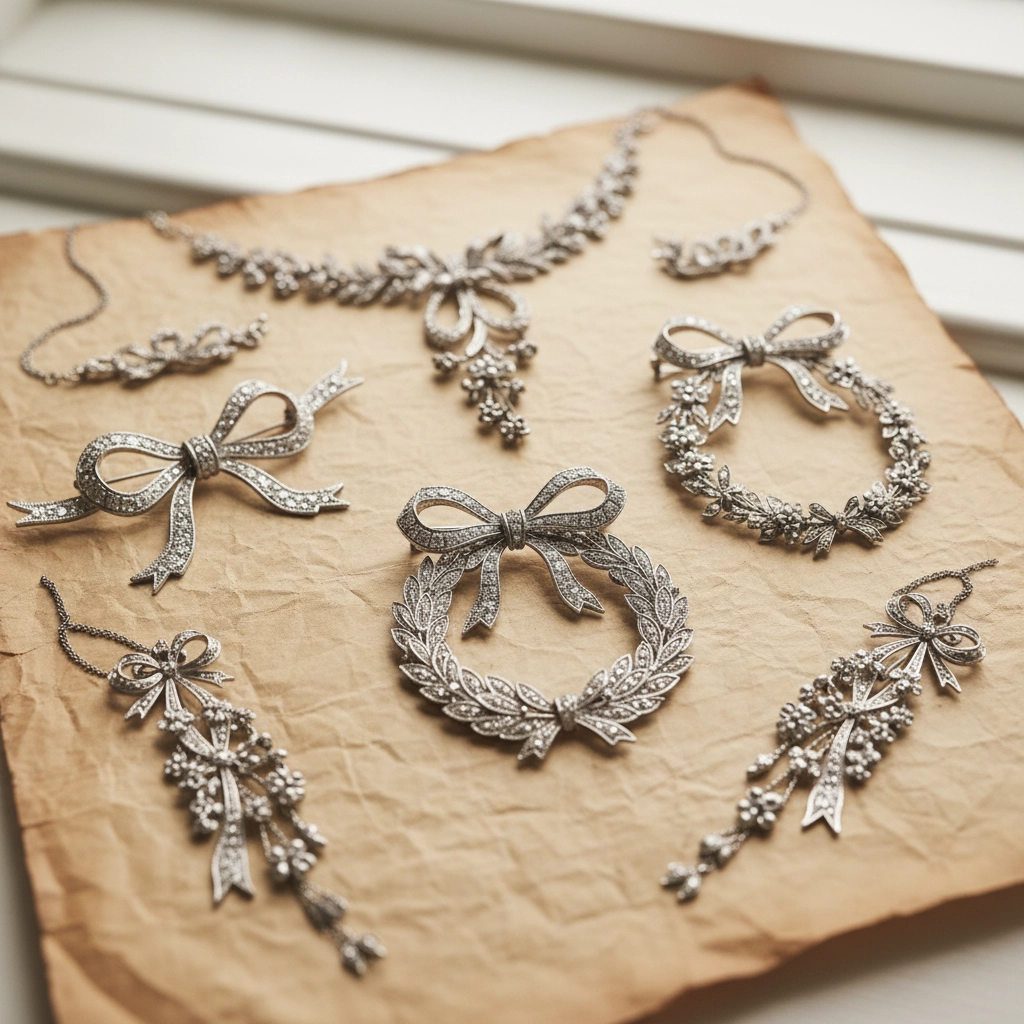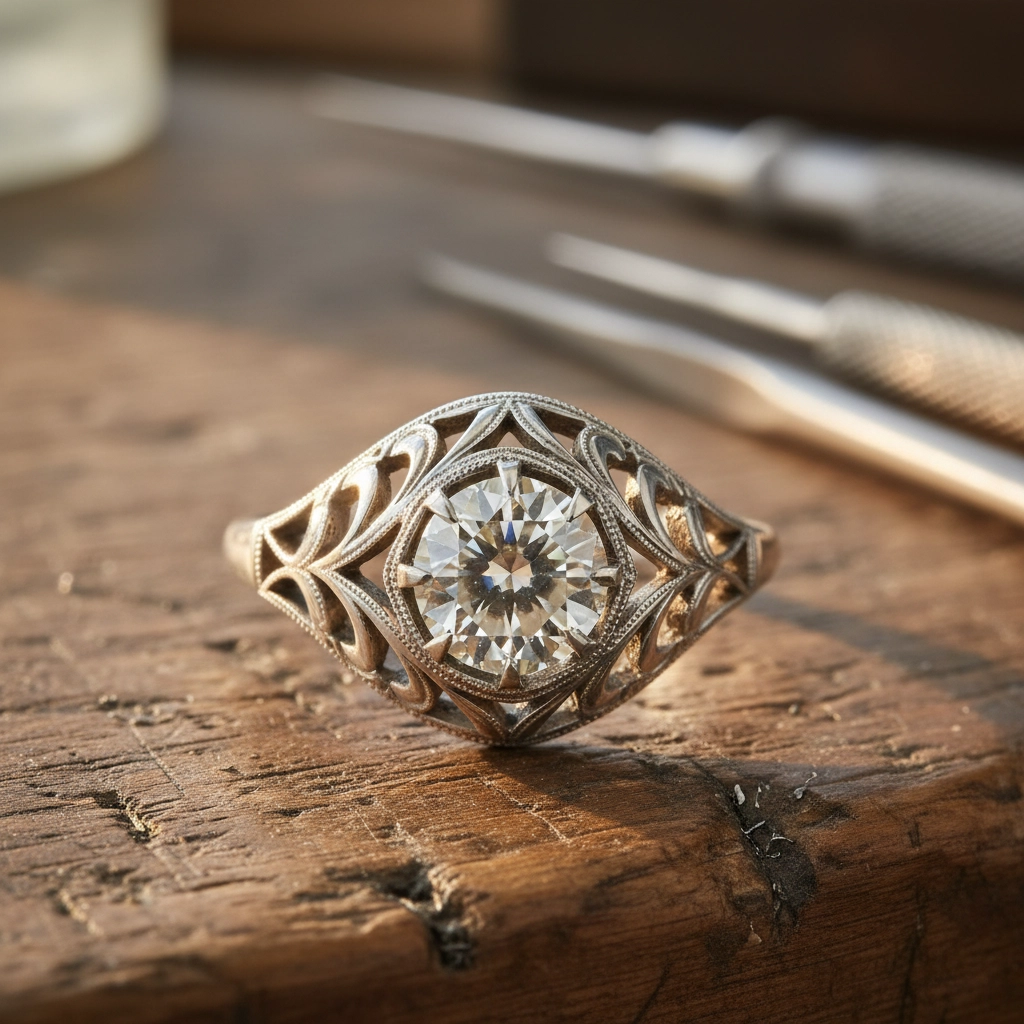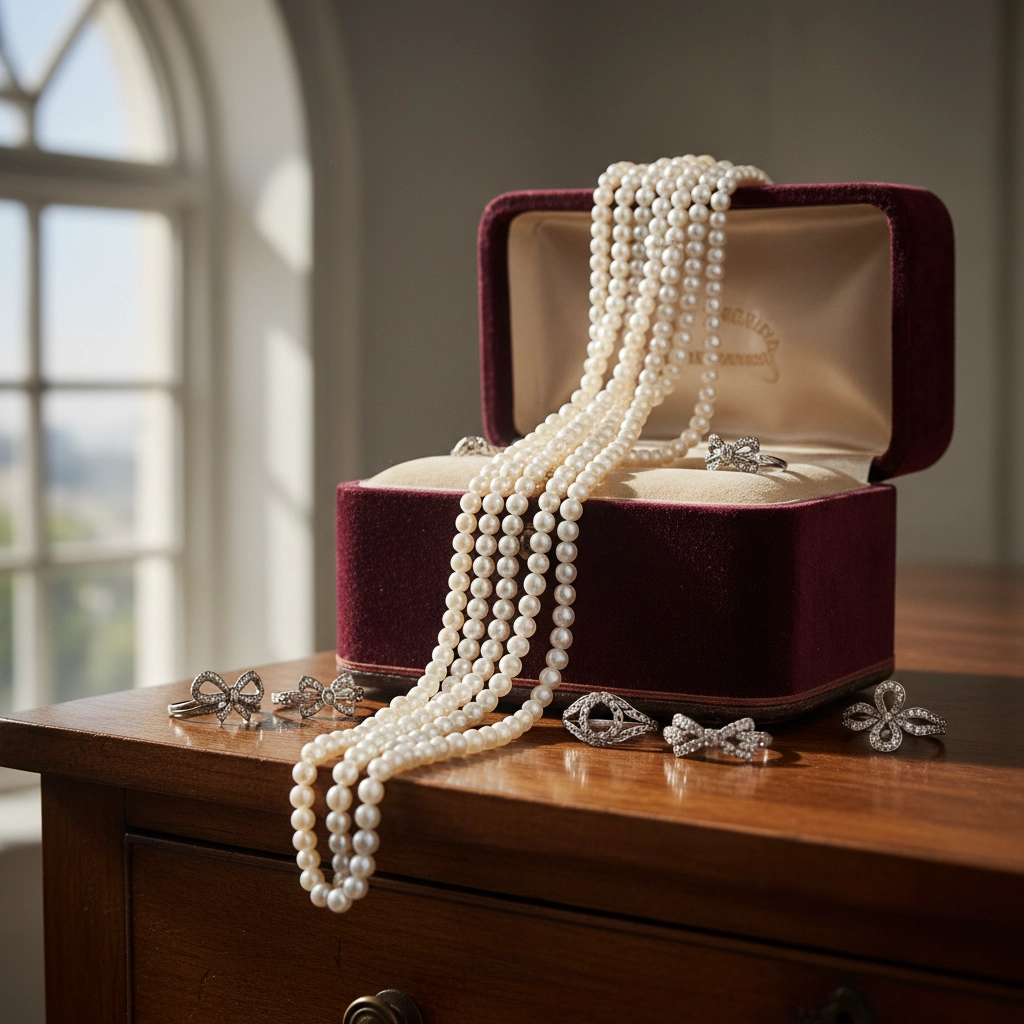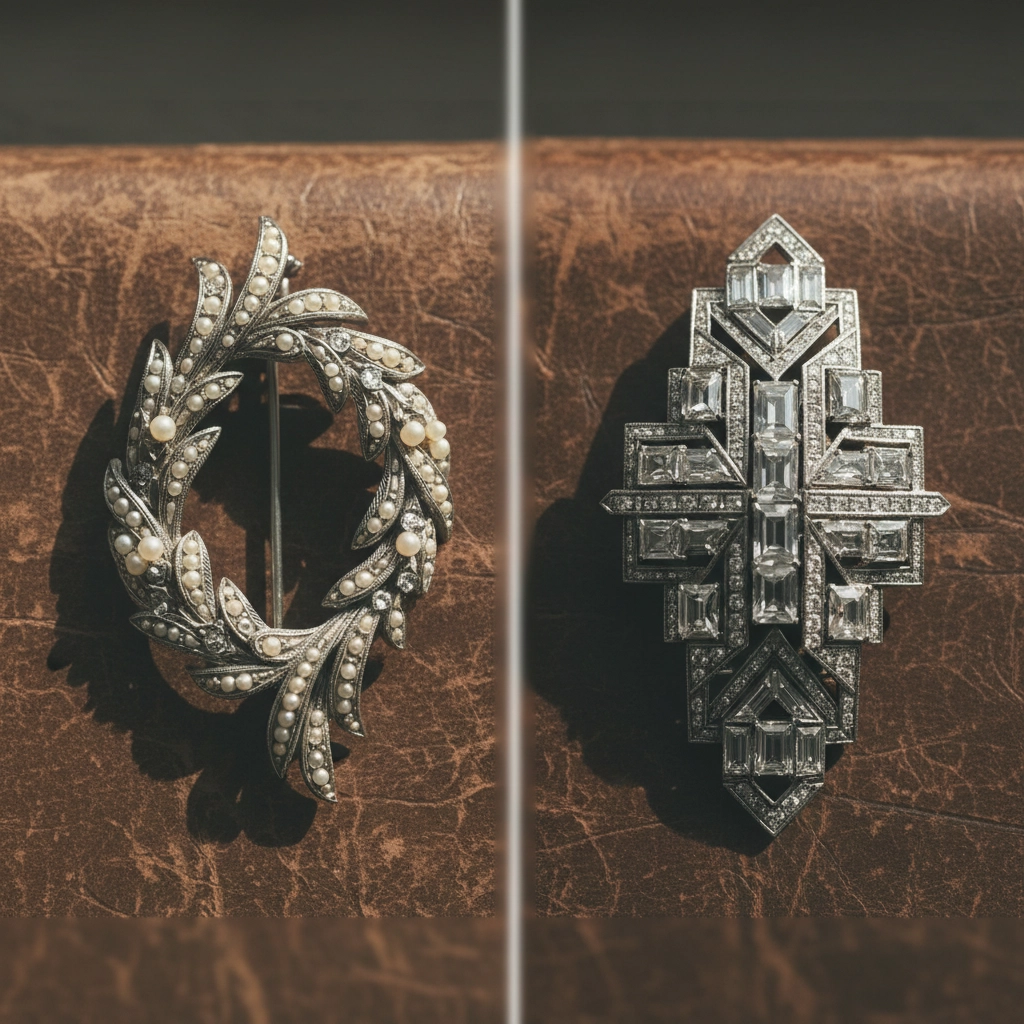Edwardian Era Jewelry Recap: This Week's Highlights & Fun Facts
Well, here we are at the end of our Edwardian jewelry journey! What a week it's been exploring one of history's most elegant and refined periods in jewelry design. I hope you've enjoyed diving into this fascinating era as much as I have. Let me take you through everything we've discovered together and share some delightful surprises I uncovered along the way.
Monday: Setting the Stage (1901-1910)
We kicked off the week by establishing the Edwardian timeline, those precious nine years when King Edward VII ruled Britain and changed jewelry forever. Remember how we talked about this being the bridge between the heavy, ornate Victorian era and the bold geometric designs that would follow?
What struck me most was how this relatively short period managed to completely revolutionize jewelry aesthetics. Think about it, in less than a decade, we went from chunky gold mourning brooches to delicate platinum masterpieces that looked like they were spun from air and moonlight.
The influence of Edward VII and Queen Alexandra cannot be overstated. Their love of luxury and entertaining set the tone for an entire generation of jewelry lovers. Can you imagine the glittering soirées at Buckingham Palace, where every woman's neck was draped in pearls and every tiara caught the gaslight just so?
Tuesday: The Language of Symbols
Our exploration of Edwardian motifs revealed just how much meaning was packed into every bow, garland, and delicate swag. I found it fascinating how these jewelers turned nature and romance into wearable art. Those graceful garlands weren't just pretty, they symbolized victory and celebration. The ribbons and bows? Pure femininity and grace.

What I love most about Edwardian symbolism is how optimistic it all feels. After the somber mourning jewelry of the Victorian era, suddenly we had butterflies representing transformation, stars for guidance and hope, and those gorgeous dragonfly brooches symbolizing change and renewal. It was as if the entire jewelry world decided to embrace joy and lightness.
Do you own any pieces with these classic Edwardian motifs? I'd love to know what symbols speak to you most. There's something timeless about a delicate bow or a nature-inspired garland that still resonates today.
Wednesday: The Technical Revolution
This was probably my favorite day of the series! We dove deep into the techniques and materials that made Edwardian jewelry possible. The platinum revolution of 1903, when the oxyacetylene torch finally gave jewelers the heat they needed to work with this remarkable metal, literally changed everything.
Before platinum became workable, jewelers were limited by gold's properties. But platinum? It was strong enough to hold diamonds securely while being malleable enough to create those impossibly delicate, lace-like settings we associate with the era.
The milgraining technique particularly amazed me. Those tiny beaded edges that soften every line and curve, it's like jewelry embroidery. And the openwork! Have you ever held an Edwardian brooch up to the light and marveled at how much air and space is part of the design? It's architectural and ethereal at the same time.

The diamond cuts of this period deserve special mention too. The old European cut, with its larger facets and romantic sparkle, perfectly complemented the era's aesthetic. Unlike today's brilliant cuts designed for maximum fire, these older cuts had a softer, more romantic glow, perfect for candlelit ballrooms and gas-lit drawing rooms.
Thursday: The Great Transition
Our final historical post covered one of the most dramatic shifts in jewelry history, the transition from Edwardian elegance to Art Deco boldness. World War I didn't just change politics and society; it completely transformed how people wanted to adorn themselves.
The contrast is striking when you think about it. One day, society ladies were wearing delicate platinum tiaras with cascading pearl drops. A few years later, they were choosing bold geometric brooches and straight-line diamond bracelets that reflected the new, more liberated world they inhabited.
It makes sense, doesn't it? The war changed women's roles dramatically. They entered the workforce in unprecedented numbers, gained new independence, and wanted jewelry that reflected their changing lives. Delicate couldn't survive in this new world, bold could.
Fun Facts That Surprised Me
Let me share some delightful discoveries I made while researching this series:
Pearls were actually more valuable than diamonds during the Edwardian era! This seems impossible to us now, but remember, cultured pearls hadn't been perfected yet. Every pearl had to be natural, making them incredibly rare and precious. Queen Alexandra was so obsessed with pearls that she reportedly owned over 400 pearl necklaces. Can you imagine having that many pearls in your jewelry box?
The "dog collar" necklace got its name from its resemblance to, well, a dog's collar. But don't let that put you off: these wide, multi-strand pearl chokers were the height of elegance. Queen Alexandra popularized them partly to hide a scar on her neck, turning a personal necessity into a fashion statement that defined an era.

Mourning jewelry got fashionable by 1910! Instead of the heavy black Victorian pieces, Edwardians created elegant black and white combinations. Diamond jewelry was set in platinum and worn with black ribbons or accented with onyx. Even grief became graceful during this period.
Ring stacking was trendy long before Instagram made it popular again. Edwardian women wore multiple rings on each finger: bow rings, garland rings, rings with large center stones surrounded by smaller diamonds. Your grandmother's generation might have been onto something that we're just rediscovering!
The Belle Époque connection is real and fascinating. The French term "Belle Époque" (Beautiful Era) covers roughly the same period, and French jewelry workshops were incredibly influential. Many of the techniques and styles we think of as "Edwardian" actually originated in Paris and crossed the Channel to influence British tastes.
What's Coming Next Week
I hope you're ready for a complete 180-degree turn! Next week, we're diving into the bold, geometric world of Art Deco jewelry (1920-1940). If Edwardian jewelry whispered, Art Deco jewelry shouted. If Edwardian was all curves and nature, Art Deco was all angles and machinery.
We'll explore how the Jazz Age influenced jewelry design, discover the new gemstones and materials that defined the era, and see how the "New Woman" of the 1920s demanded jewelry that matched her liberated lifestyle. Think Egyptian revival motifs (thanks to King Tut's tomb discovery), cocktail rings that could stop traffic, and geometric patterns that looked like they belonged on a skyscraper.

The contrast between what we've studied this week and what's coming next perfectly illustrates how jewelry reflects its time. The Edwardian era's romantic optimism gave way to Art Deco's bold confidence: and both periods created pieces we still treasure today.
Wrapping Up Our Edwardian Adventure
As I look back on this week's journey, what strikes me most is how the Edwardian era represents a perfect storm of technological advancement, artistic vision, and cultural optimism. The invention of workable platinum, the refinement of diamond cutting, and the era's love of luxury all came together to create jewelry that still takes our breath away more than a century later.
Whether you're drawn to the romantic symbolism, the technical innovations, or simply the undeniable elegance of Edwardian design, I hope this week has given you a new appreciation for this remarkable period. Every time you see a delicate platinum setting, a milgrained edge, or a graceful garland motif, you'll know you're looking at the legacy of those nine transformative years.
What aspect of Edwardian jewelry fascinated you most? Was it the technical mastery, the romantic symbolism, or the dramatic historical context? I'd love to hear what resonated with you as we prepare to leap into the completely different world of Art Deco next week!
Cheers,
Peter